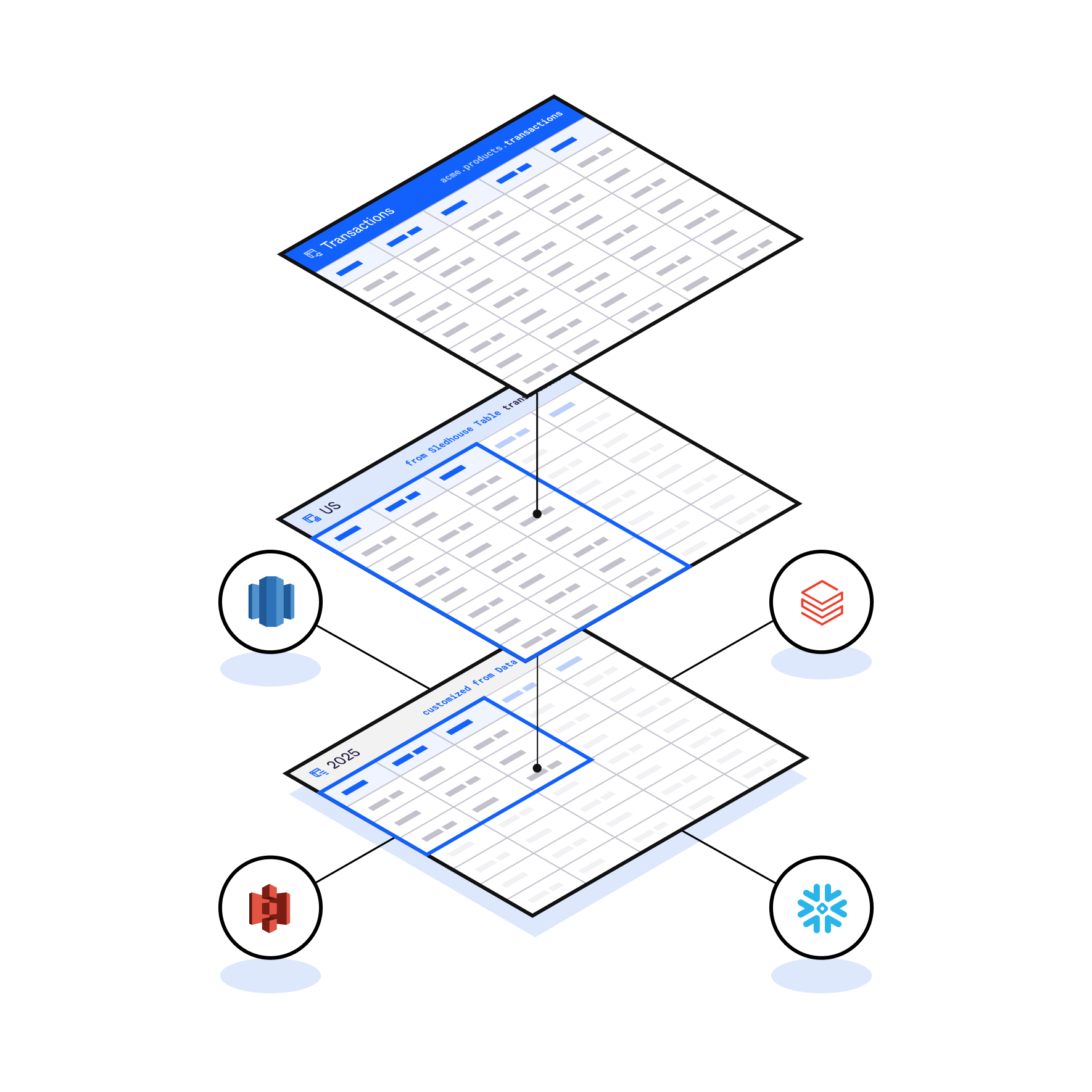A Sledhouse Table is Bobsled’s managed, analytic-ready replica of your source data. Think of it as a golden copy—we keep it up to date, store it in our infrastructure, and make it available for you to filter, transform, and share without touching your source again.

Why Sledhouse Tables exist
Moving data directly from source to destination works fine—but every transfer means reconnecting, re-extracting, and re-processing from scratch. That can:
Increase egress costs
Slow down delivery times
Limit the ability to reuse or repurpose data
A Sledhouse Table solves this by creating a single, central copy in Bobsled. From there, you can distribute it to any number of destinations via Data Products without re-pulling from the source each time.
Key benefits
Benefit | What it means for you |
|---|---|
Egress-friendly | Once the data is in Bobsled, we don’t need to re-pull it from your source for each delivery—reducing cross-region/cloud transfer costs. |
Performance-friendly | Distributing from a local copy is faster, especially when using Local Copies (for Cloud Data Warehouses) for destinations in the same region. |
In sync | You control the schedule. We keep your copy fresh. |
Flexible outputs | Create Data Products from the Sledhouse Table—filtered, transformed, or enriched—and send them anywhere. |
Multi-destination ready | Share the same data with multiple consumers or platforms without additional configuration. |
How it works
Ingest from your source
Connect your Cloud Data Warehouse (CDW) or File Storage source.
Configure once how the Sledhouse should be updated and replicated.
We run an initial sync to build your Sledhouse Table.
Store in Bobsled
Your golden data lives in Bobsled’s infrastructure as an Iceberg table (or equivalent format).
We manage its storage, schema, and metadata.
Keep in sync
On your defined schedule, Bobsled pulls only changes (or full reloads if needed) to keep the Sledhouse Table fresh.
Distribute anywhere
Turn the Sledhouse Table into one or more Data Products and share them with destinations like Snowflake, Databricks, BigQuery, Amazon S3, or Google Cloud Storage.
Ready to fast-track your data? Get started with our Sledhouse quickstart guide, or jump in to create and manage Sledhouse Tables.